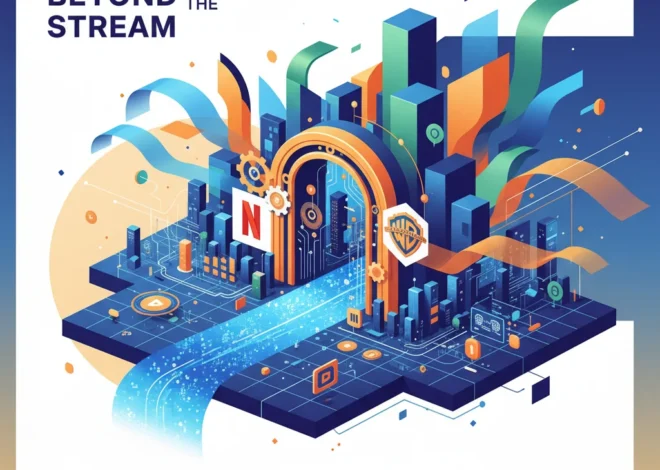
Beyond the Ticker: Decoding the Market’s Secrets to Crown a Champion
In the fast-paced world of finance, where fortunes are made and lost on the razor’s edge of information, a quiet victory was recently announced. The Financial Times’ Alphaville, a corner of the internet revered for its sharp, often irreverent, financial commentary, concluded its notoriously difficult charts quiz. The winner? A user known simply as “T-total” (source). While the announcement was characteristically brief, the achievement is anything but. To conquer this challenge is to demonstrate a profound understanding of the global economy, not just as a series of headlines, but as a living, breathing story told through data.
But what does it truly take to become a chart champion? It requires more than just a casual glance at the stock market. It demands an ability to see the narrative woven into every peak, trough, and trendline. It’s about recognizing the whispers of an impending banking crisis in the subtle shift of a yield curve or seeing the seeds of a technological revolution in the exponential rise of a single stock. This victory isn’t just about a quiz; it’s a testament to the power of financial literacy and the art of data interpretation in an increasingly complex world of investing and economics.
The Visual Language of Finance: Why Charts Matter More Than Ever
In the digital age, we are inundated with financial data. From complex derivatives pricing to real-time stock market fluctuations, the sheer volume can be overwhelming. This is where the humble chart becomes an indispensable tool. It transforms raw, chaotic numbers into a coherent visual narrative, allowing investors, traders, and business leaders to identify patterns, understand risk, and make informed decisions. A single chart can convey more insight than pages of dense text, making it the universal language of modern finance.
Understanding this language involves recognizing the key stories that shaped the market landscape. The FTAV quiz, a gauntlet of graphical puzzles, would have undoubtedly drawn from the most pivotal economic events of the preceding year. To win, “T-total” would have needed to decipher the visual fingerprints of inflation, the frenzy of artificial intelligence, the fragility of the banking sector, and the persistent evolution of financial technology.
A Year in Charts: The Stories That Defined the Market
While the specific questions of the quiz remain a closely guarded secret, we can speculate on the key themes that any market-savvy contestant would have needed to master. These are the charts that told the most compelling stories of the year—the kind of data that separates the casual observer from a true market analyst.
1. The Great Inflation Cooldown
Perhaps no economic story was more dominant than the battle against inflation. After reaching multi-decade highs, central banks around the world engaged in an aggressive campaign of interest rate hikes. The key chart here would be the Consumer Price Index (CPI). A contestant would need to identify the peak, the subsequent—and often bumpy—decline, and perhaps even distinguish between headline and core inflation. This wasn’t just about economics; it was a story that directly impacted every household budget and corporate balance sheet. The ability to interpret this trend was crucial for understanding the Federal Reserve’s policy decisions and their ripple effects across the entire stock market, from growth stocks to bonds.
2. The Unstoppable Ascent of AI
If one chart captured the speculative fervor of the year, it was the meteoric rise of companies at the forefront of the AI revolution, most notably NVIDIA. Its stock chart became a symbol of a new technological gold rush. An astute quiz participant would not only recognize the chart’s parabolic curve but also understand the underlying drivers: the unprecedented demand for advanced GPUs to power large language models. This single trend reshaped the stock market, propelling the tech sector to new heights and forcing investors to grapple with sky-high valuations. The narrative here was one of disruptive innovation, a theme central to the future of financial technology and the broader economy.
3. The Banking Sector’s Moment of Truth
The spring brought a sudden and chilling reminder of systemic risk with the collapse of Silicon Valley Bank and the subsequent turmoil in the regional banking sector. The critical charts here would have been more nuanced. Perhaps a chart showing the dramatic decline in a bank’s stock price, or more subtly, a visualization of unrealized losses on bond portfolios held by regional banks—a direct consequence of rising interest rates. This story was a masterclass in the interconnectedness of monetary policy and banking stability. Deciphering these charts required an understanding of asset-liability management, depositor confidence, and the swift government intervention required to prevent a full-blown crisis (source).
4. The Quiet Resilience of Fintech and Blockchain
After a brutal “crypto winter,” the world of blockchain and digital assets began to show signs of a thaw. While speculative mania subsided, the underlying financial technology continued to evolve. A quiz might have featured a chart on the growing market capitalization of stablecoins, the increasing transaction volume on a specific blockchain like Ethereum, or the steady adoption of fintech payment solutions. This narrative is one of maturation. It’s about the shift from hype-driven trading to a focus on real-world utility, a crucial development for the future of banking and finance. Understanding this quiet, persistent growth demonstrates an ability to look beyond the headlines and see the long-term trends in financial innovation.
To provide a clearer picture, here is a summary of these key market themes and the visual data that represents them:
| Key Market Theme | Likely Chart Representation | What It Reveals |
|---|---|---|
| Inflation & Monetary Policy | Consumer Price Index (CPI) YoY Change | The effectiveness of central bank policies and their impact on the economy. |
| AI Technology Boom | NVIDIA (NVDA) Stock Price Chart | Investor sentiment, sector rotation, and the market’s pricing of future growth. |
| Regional Banking Stress | Financial Select Sector SPDR Fund (XLF) vs. KRE Regional Banking ETF | Systemic risk, investor confidence in the banking system, and the impact of interest rates. |
| Fintech & Blockchain Maturation | Total Value Locked (TVL) in DeFi Protocols | The underlying health and adoption of decentralized finance beyond speculative trading. |
Cultivating a Champion’s Mindset: Skills for the Modern Investor
So, what separates a chart wizard from the average investor? It boils down to a few key disciplines that anyone can cultivate.
- Voracious Curiosity: A deep understanding of the markets begins with an insatiable need to know “why.” Why did the stock market rally despite negative economic news? What is the second-order effect of a change in energy prices? This curiosity drives the continuous learning necessary to connect the dots between disparate events.
- Multidisciplinary Thinking: The economy is not a closed system. It’s influenced by geopolitics, technology, psychology, and demographics. A skilled analyst draws on principles from economics, history, and even behavioral science to build a holistic view. They understand that a supply chain disruption in Asia can influence inflation data in America a few months later (source).
- Pattern Recognition: This is the ability to see recurring formations and trends in data. It’s about recognizing historical parallels—understanding how a current market situation might rhyme with past events, without assuming it will repeat exactly. This involves both technical analysis of chart patterns and a fundamental analysis of the underlying economic conditions.
- Information Diet: Finally, it’s about consuming high-quality information. Relying on credible, in-depth sources while being skeptical of hype and noise is paramount. Engaging with challenging content, like the FTAV quiz itself, is a form of mental training that sharpens analytical skills over time.
In the end, the announcement of “T-total” as the winner is more than just a name on a screen. It’s a celebration of the intellectual rigor required to navigate the modern financial world. It reminds us that behind every trade, every investment, and every market fluctuation, there is a story waiting to be told through data. For those of us—whether finance professionals, business leaders, or simply curious individuals—who take the time to learn the language of charts, the rewards are not just potentially financial, but intellectual. It is the reward of understanding the complex, interconnected world we all inhabit.


